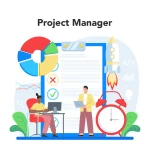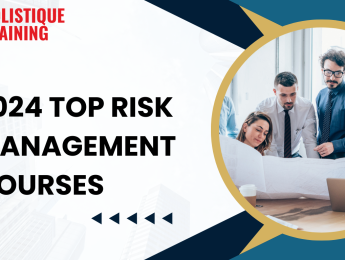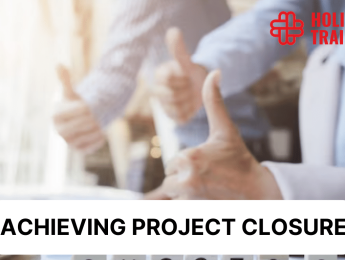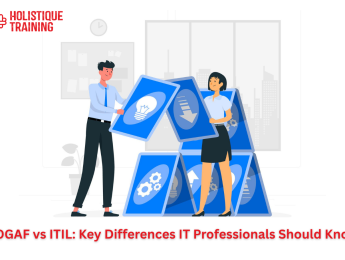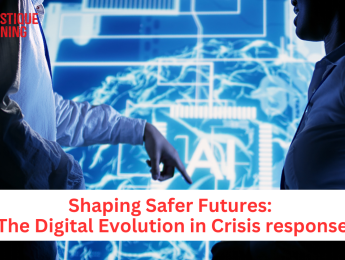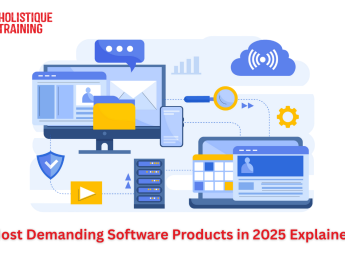- Table of Contents
- What Is Stakeholder Management?
- Why Is Stakeholder Management Important?
- 1. Clarity in Stakeholder Expectations
- 2. Early Risk Identification
- 3. Trust, Transparency, and Positive Relationships
- 4. Improved Collaboration
- 5. Resistance Mitigation
- 6. Long-Term Project Sustainability
- 7. Enhanced Decision-Making
- 8. Strategic Alignment
- What Are the Best Practices in Stakeholder Management?
- 1. Identify and Prioritise Stakeholders
- 2. Understand Stakeholder Needs
- 3. Develop a Communication Plan
- 4. Engage Early and Continuously
- 5. Manage Expectations
- 6. Resolve Conflicts Proactively
- 7. Build Relationships
- 8. Feedback Mechanisms
- 9. Document and Learn
- 10. Regularly Reassess and Adapt
- The Role of Project Managers in Stakeholder Management
- Stakeholder Analysis and Mapping
- Establishing Clear Objectives and Expectations
- Communication and Engagement
- Managing Stakeholder Interests and Concerns
- Change Management
- Conflict Resolution
- Building Relationships
- Technology as a Catalyst for Stakeholder Engagement
- Project Management Tools
- Collaboration Platforms
- Data Analytics for Stakeholder Insights
- Virtual Reality (VR) and Augmented Reality (AR)
- Social Media Platforms
- Online Surveys and Feedback Tools
- Customer Relationship Management (CRM) Systems
- Mobile Apps for Accessibility
- Blockchain for Transparency
- Artificial Intelligence (AI) for Personalisation
- Sustainable Stakeholder Management for Long-term Impact
- 1. Inclusive Engagement Beyond Project Boundaries
- 2. Holistic Consideration of Stakeholder Impact
- 3. Ethical and Social Responsibility
- 4. Transparent Communication for Trust Building
- 5. Long-term Value Recognition
- 6. Consistent Engagement Beyond Project Completion
- 7. Flexible Adaptation to Stakeholder Evolution
- 8. Measurement and Improvement Metrics
- 9. Capacity Building and Empowerment
- 10. Legacy Building and Relationship Continuity
- Conclusion
Introduction
Stakeholder management is a vital aspect of any project or initiative. It encompasses strategies and practices that enable organisations to effectively engage with individuals or groups who have a vested interest or influence in the project's outcome. Organisations can enhance project success rates by prioritising stakeholder needs, expectations, and concerns and establishing positive relationships with key stakeholders. In this blog post, we will delve into the significance of stakeholder management, explore its best practices, and discuss the pivotal role project managers play in stakeholder engagement.
What Is Stakeholder Management?
Stakeholder management refers to the process of identifying, analysing, and engaging with individuals, groups, or organisations that can affect or be affected by a project. Stakeholders can include internal entities such as employees and shareholders and external entities like customers, suppliers, government agencies, and community members. Effective stakeholder management aims to understand stakeholders' interests, assess their level of influence, and develop strategies to align their expectations with project objectives.
Why Is Stakeholder Management Important?
According to a survey, 40% of the respondents identified stakeholder management as the single most crucial process for project success. Let's dissect the reasons why this facet stands out as a game-changer.
1. Clarity in Stakeholder Expectations
At the nucleus of project success lies a deep comprehension of stakeholder expectations. The intricate web of stakeholders, ranging from internal teams to external entities like customers and government agencies, brings diverse perspectives and requirements to the table. Stakeholder management is the compass, guiding organisations to understand, prioritise, and align project goals with these multifaceted expectations. The absence of this alignment could lead to a project veering off course, with goals misaligned and outcomes falling short.
2. Early Risk Identification
Projects are inherently laden with uncertainties, and effective stakeholder management is responsible for acting as a vigilant watchtower. Organisations gain access to a wealth of insights that traditional risk assessments might overlook by involving stakeholders from the project's inception. Stakeholders possessing an intimate understanding of their domains can flag potential risks, conflicts, or untapped opportunities that might escape the scrutiny of the project team. Early identification empowers organisations to navigate challenges and capitalise on opportunities proactively, contributing to project resilience.
3. Trust, Transparency, and Positive Relationships
Trust is the currency of successful projects; stakeholder management is how organisations mint it. Trust flourishes when stakeholders perceive transparency in communication, a commitment to addressing their concerns, and a genuine effort to align project outcomes with their interests. Positive relationships blossom, paving the way for collaborative endeavours. Stakeholder support becomes more than a checkbox; it transforms into an invaluable asset that smoothens project progression.
4. Improved Collaboration
Stakeholder management fosters an environment conducive to collaboration. When stakeholders feel valued, listened to, and included in the decision-making process, their enthusiasm for the project surges. This heightened engagement results in a collaborative synergy where diverse stakeholders' collective intelligence and expertise are harnessed for optimal project outcomes. In contrast, neglecting stakeholder engagement can lead to silos, miscommunication, and a fragmented project landscape, impeding overall progress.
5. Resistance Mitigation
Resistance to change is a formidable force that can impede even the most well-planned projects. Stakeholder management serves as a preemptive strike against resistance by actively involving stakeholders in the change process. When stakeholders understand the rationale behind changes, their concerns are addressed transparently, and they are part of decision-making, resistance is significantly mitigated. This proactive approach transforms potential adversaries into advocates, reducing friction and increasing the chances of project success.
6. Long-Term Project Sustainability
The impact of stakeholder management extends far beyond the immediate project horizon. Building and nurturing relationships with stakeholders lays the foundation for long-term project sustainability. Satisfied stakeholders are more likely to offer continued support, engage in future initiatives, and contribute positively to an organisation's reputation. The ripple effect of effective stakeholder management can extend well into the future, creating a reservoir of goodwill that transcends individual projects.
7. Enhanced Decision-Making
Informed decision-making is a cornerstone of successful projects, and stakeholder management injects a diversity of perspectives into this process. By engaging stakeholders in discussions, feedback sessions, and collaborative forums, project managers gain access to a wealth of insights. Often rooted in real-world experience and domain expertise, these insights enrich decision-making processes, helping organisations make more informed and robust choices.
8. Strategic Alignment
Stakeholder management is the compass that ensures the needle of project objectives aligns with the magnetic field of organisational strategy. Projects that operate in isolation from organisational goals risk becoming detached satellites, lacking the gravitational pull of strategic alignment. Effective stakeholder management aligns the trajectory of a project with the overarching strategic vision, ensuring that each project contributes meaningfully to organisational objectives.
In essence, stakeholder management is the linchpin that holds a project's tapestry together. It is the art of balancing diverse interests, aligning disparate expectations, and fostering an environment where collaboration and trust thrive. As organisations navigate the intricate landscape of project management, recognising the pivotal role of stakeholder management is not just a best practice but an imperative for success.
What Are the Best Practices in Stakeholder Management?
To ensure successful stakeholder management, organisations should adopt a set of best practices that promote effective engagement and communication. Here are some key strategies:
1. Identify and Prioritise Stakeholders
The journey begins with a comprehensive stakeholder identification process. Cast a wide net to capture all relevant individuals, groups, or organisations that could impact or be impacted by the project. Categorise them based on their influence, impact, and level of support or opposition. Prioritise engagement efforts by directing focus towards stakeholders with significant influence and impact. This practice lays the groundwork for strategic and targeted stakeholder interactions.
2. Understand Stakeholder Needs
Effective stakeholder management is built on a foundation of understanding. Conduct thorough stakeholder analysis to understand their expectations, concerns, and requirements. This analysis delves into the nuances of stakeholder needs, providing a roadmap for tailoring project objectives, deliverables, and communication strategies. This practice transforms stakeholders from abstract entities into partners with specific expectations that can be met proactively.
3. Develop a Communication Plan
The lifeblood of stakeholder management is communication. Establish a robust communication plan that outlines how information will be shared with stakeholders. Consider diverse communication channels such as regular project updates, newsletters, meetings, or online platforms. A well-structured communication plan caters to the preferences of different stakeholders, fostering trust and keeping them informed throughout the project lifecycle.
4. Engage Early and Continuously
Early involvement sets the stage for project success. Involve stakeholders from the embryonic stages of project planning to gather valuable insights and ensure their buy-in. Continuous engagement maintains a dynamic connection throughout the project lifecycle. Regular updates, feedback sessions, and addressing concerns promptly are pivotal elements. This ongoing interaction prevents misunderstandings and adapts the project to evolving stakeholder expectations.
5. Manage Expectations
Setting realistic expectations is a cornerstone of successful stakeholder management. Clearly define project objectives, timelines, and potential risks. Provide stakeholders with accurate and timely information, avoiding overpromising or underdelivering. Proactively manage changes and communicate their impact on the project. This practice establishes a transparent framework, minimising surprises and maintaining stakeholder confidence.
6. Resolve Conflicts Proactively
Conflicts among stakeholders are inevitable in the complex landscape of projects. Project managers must anticipate conflicts and address them promptly to prevent escalation. They must facilitate open dialogue, actively listen to concerns, and seek win-win solutions that consider the interests of all parties involved. This proactive conflict resolution approach ensures that disagreements are channels for improvement rather than roadblocks to progress.
7. Build Relationships
The fabric of stakeholder management is woven with relationships. Cultivate strong connections with stakeholders based on trust, respect, and mutual understanding. Recognise and appreciate their contributions, extending engagement beyond project completion. Long-term relationships forged during one project can become the bedrock for future collaborations and support. Building relationships is an ongoing practice, ensuring stakeholders remain valued contributors beyond individual projects.
8. Feedback Mechanisms
Establishing feedback mechanisms is instrumental in maintaining a pulse on stakeholder sentiments. Regularly assess stakeholder satisfaction and gather feedback on project progress. This practice provides valuable insights, allowing project managers to promptly adapt engagement strategies, address concerns, and make informed decisions. Feedback mechanisms transform stakeholder management into an iterative process, refining strategies based on evolving stakeholder needs.
9. Document and Learn
A best practice often overlooked is the documentation of stakeholder interactions and lessons learned. Maintain a comprehensive record of stakeholder engagements, feedback, and conflict resolutions. This documentation is a valuable resource for future projects, offering insights into effective communication strategies, successful conflict resolution approaches, and nuances of diverse stakeholder needs.
10. Regularly Reassess and Adapt
Stakeholder dynamics are fluid, influenced by external factors and changing project landscapes. Regularly reassess the stakeholder landscape, considering shifts in influence, evolving expectations, or new stakeholders entering the scene. Adapt stakeholder management strategies accordingly, ensuring they remain agile and responsive to the ever-changing project environment.
In essence, these best practices form a comprehensive playbook for navigating the complexities of stakeholder management. They provide project managers with a structured approach that transcends the mundane and transforms stakeholder engagement into art. By embracing these practices, organisations elevate the success potential of their projects, fostering stakeholder satisfaction and contributing to a culture of collaboration and transparency.
The Role of Project Managers in Stakeholder Management
Project managers play a critical role in stakeholder management. They are the primary point of contact and bridge between the project team and stakeholders, ensuring effective communication and engagement. Here are key responsibilities project managers should embrace:
Stakeholder Analysis and Mapping
Project managers should conduct a comprehensive stakeholder analysis to identify and understand the various stakeholders involved. Project managers can prioritise their engagement efforts by mapping stakeholders' interests, expectations, and influence and tailor communication strategies accordingly.
Establishing Clear Objectives and Expectations
Project managers should collaborate with stakeholders to define project objectives, scope, and deliverables. By setting clear expectations from the outset, project managers can align stakeholder interests with project outcomes and mitigate potential conflicts later on.
Communication and Engagement
Effective communication is at the core of stakeholder management. Project managers should develop a robust communication plan that outlines channels, frequencies, and formats for sharing project updates, progress, and relevant information. They should also actively engage stakeholders through meetings, workshops, feedback sessions, and regular reporting to foster transparency and stakeholder buy-in.
Managing Stakeholder Interests and Concerns
Project managers must actively listen to stakeholders' concerns, needs, and feedback. By addressing their interests and resolving conflicts promptly, project managers can prevent potential roadblocks and maintain stakeholder support. They should ensure stakeholders feel heard and their contributions are valued throughout the project lifecycle.
Change Management
Project managers are responsible for change management; in other words, they must effectively manage changes within the project and communicate their impact on stakeholders. By proactively addressing changes, risks, and mitigating measures, project managers can maintain stakeholder trust and minimise resistance to change. They should provide timely updates and engage stakeholders in decision-making processes that affect project outcomes.
Conflict Resolution
Inevitably, conflicts may arise among stakeholders throughout the project. Project managers should act as mediators, facilitating constructive dialogue and seeking resolution. By acknowledging diverse perspectives, project managers can find common ground and forge mutually beneficial solutions.
Building Relationships
Project managers should focus on building and nurturing relationships with stakeholders. Project managers can establish long-term partnerships that extend beyond the current project by demonstrating professionalism, respect, and trustworthiness. Cultivating strong relationships can foster stakeholder loyalty and support and pave the way for future collaborations.
Technology as a Catalyst for Stakeholder Engagement
In the digital age, integrating technology has become more than a convenience; it has evolved into a strategic imperative. Stakeholder engagement, a critical aspect of project success, is no exception to this digital transformation. Leveraging technology as a catalyst for stakeholder engagement can revolutionise communication, streamline collaboration, and enhance overall project outcomes.
Project Management Tools
Embracing specialised project management tools is akin to providing stakeholders with a virtual command centre. These tools offer a centralised platform for project documentation, task management, and communication. Stakeholders can access real-time updates, track progress, and collaborate seamlessly, irrespective of geographical boundaries. Project managers benefit from enhanced transparency, improved organisation, and the ability to address stakeholder concerns promptly.
Collaboration Platforms
Virtual collaboration platforms act as digital arenas where stakeholders can converge, share ideas, and contribute to project discussions. Platforms like Slack, Microsoft Teams, or Asana facilitate real-time communication, file sharing, and collaborative document editing. This fosters an environment where stakeholders feel interconnected, breaking down communication barriers and encouraging active participation.
Data Analytics for Stakeholder Insights
The power of data analytics can be harnessed to gain deeper insights into stakeholder behaviour and preferences. Project managers can tailor their strategies more effectively by analysing data related to stakeholder interactions, feedback, and engagement metrics. Predictive analytics can even forecast potential issues, allowing proactive measures to be taken. This data-driven approach transforms stakeholder engagement from reactive to proactive.
Metric | Description | Purpose |
Stakeholder Satisfaction | Assess overall satisfaction and engagement. | Gauge the effectiveness of communication and engagement strategies. |
Engagement Level | Measure the frequency and depth of engagement. | Evaluate the active involvement of stakeholders throughout the project. |
Impact Assessment | Evaluate the positive or negative project impact. | Understand the project's influence on stakeholders and refine strategies accordingly. |
Feedback Effectiveness | Assess the quality and impact of stakeholder feedback. | Improve decision-making and refine engagement strategies based on stakeholder insights. |
Relationship Continuity | Track the continuity and longevity of relationships. | Measure the success of long-term relationship building efforts beyond individual projects. |
Table 1: Metrics to measure stakeholder management
Virtual Reality (VR) and Augmented Reality (AR)
VR and AR technologies can elevate stakeholder engagement to new heights for projects with complex visual components. Stakeholders can experience virtual walkthroughs of construction sites, prototypes, or product designs. This immersive experience enhances understanding and allows stakeholders to provide more informed feedback. VR and AR technologies bring a tangible dimension to stakeholder engagement, particularly in industries where visualisation is paramount.
Social Media Platforms
The ubiquity of social media presents an opportunity for organisations to engage stakeholders more dynamically and informally. Platforms like LinkedIn, Twitter, and Facebook can be leveraged for project updates, announcements, and fostering community discussions. Social media provides a channel for real-time interaction, enabling stakeholders to express their opinions and concerns openly. It also serves as a valuable tool for building brand loyalty and projecting a positive organisational image.
Online Surveys and Feedback Tools
Gathering stakeholder feedback is essential for continuous improvement. Online survey tools like SurveyMonkey or Google Forms offer a convenient way to collect structured feedback. These tools enable project managers to design targeted surveys, measure stakeholder satisfaction, and identify areas for improvement. The data collected from these surveys serves as a valuable resource for refining strategies and enhancing stakeholder experience.
Customer Relationship Management (CRM) Systems
CRM systems are not limited to sales and marketing; they can be powerful tools for stakeholder management. Project managers can personalise communication and engagement strategies by maintaining a centralised database of stakeholder information, interactions, and preferences. CRM systems also facilitate tracking historical interactions, ensuring that stakeholders are treated with continuity and consistency.
Mobile Apps for Accessibility
Stakeholders are often on the move, and mobile apps provide a convenient means of staying connected. Project-specific mobile apps can offer stakeholders instant access to project updates, communication channels, and relevant documentation. This level of accessibility enhances stakeholder engagement by providing information at their fingertips, fostering a sense of connection regardless of physical location.
Blockchain for Transparency
In projects where transparency is paramount, blockchain technology can be a game-changer. Blockchain ensures that data is tamper-proof and provides an immutable record of transactions and communications. This enhances the security of stakeholder information and instils a high level of trust. Blockchain can be a valuable asset for industries with stringent regulatory requirements, such as finance or healthcare.
Artificial Intelligence (AI) for Personalisation
AI-driven technologies can analyse stakeholder behaviour, preferences, and historical interactions to tailor communication on an individual level. AI-powered chatbots can provide instant responses to stakeholder queries, ensuring that basic information is available round the clock. Personalised interactions create a more engaging and responsive stakeholder experience.
By embracing these technological advancements, organisations can transform stakeholder engagement from a static process into a dynamic, interactive, and data-driven strategy. Integrating technology as a catalyst for stakeholder engagement enhances project management efficiency and builds positive and lasting relationships with stakeholders. As the digital landscape evolves, organisations that adeptly leverage technology will find themselves at the forefront of successful stakeholder engagement.
Sustainable Stakeholder Management for Long-term Impact
Sustainability, often associated with environmental practices, extends its roots into stakeholder management, becoming a crucial aspect of long-term project success. Sustainable stakeholder management transcends the immediate project scope, fostering enduring relationships and positive contributions that echo far beyond a single initiative. Let's explore the intricacies of sustainable stakeholder management and its profound implications for organisational resilience.
1. Inclusive Engagement Beyond Project Boundaries
Sustainable stakeholder management envisions engagement that goes beyond the confines of individual projects. Rather than viewing stakeholders as transient contributors, organisations embrace an inclusive approach. Stakeholders become integral members of a broader community, engaged not only in the current project but also consulted and involved in the planning stages of future initiatives. This inclusivity builds a sense of belonging and ensures stakeholders remain invested in the organisation's long-term success.
2. Holistic Consideration of Stakeholder Impact
Beyond immediate project objectives, sustainable stakeholder management considers the holistic impact on all stakeholders. This involves recognising the direct participants and indirect contributors or those affected by the project's outcomes. This holistic approach ensures that decisions and strategies are crafted with a panoramic view, minimising unintended consequences and garnering support from a broader spectrum of stakeholders.
3. Ethical and Social Responsibility
Sustainability in stakeholder management involves an unwavering commitment to ethical practices and social responsibility. Organisations recognise their role as corporate citizens and consider their projects' social, economic, and environmental implications. This commitment is embedded in decision-making processes, ensuring that stakeholders perceive the organisation as a project executor and a responsible entity contributing positively to society.
4. Transparent Communication for Trust Building
Transparency becomes a cornerstone in sustainable stakeholder management. Clear and open communication regarding project objectives, progress, challenges, and outcomes fosters trust. Stakeholders are not only informed but are active participants in the journey. Transparency also extends to acknowledging mistakes or setbacks, demonstrating the organisation's commitment to an honest and trustworthy relationship. This level of transparency builds a foundation of trust that stands the test of time.
5. Long-term Value Recognition
Sustainable stakeholder management involves recognising the long-term value of each stakeholder. It goes beyond immediate project contributions to acknowledge the expertise, experience, and insights that stakeholders bring to the table. Organisations invest in understanding and appreciating the unique contributions of stakeholders, fostering an environment where their ongoing involvement is not just welcomed but actively sought.
6. Consistent Engagement Beyond Project Completion
While project completion marks a milestone, sustainable stakeholder management views it as a stepping stone to a continued relationship. Consistent engagement goes beyond project timelines, involving stakeholders in post-project evaluations, feedback sessions, and discussions on lessons learned. This post-project engagement not only refines future strategies but also reinforces the perception that stakeholders are valued collaborators for a project and the organisation's overarching goals.
7. Flexible Adaptation to Stakeholder Evolution
Stakeholder dynamics evolve, influenced by industry trends, economic shifts, and societal changes. Sustainable stakeholder management involves a flexible and adaptive approach that recognises these shifts. Organisations proactively monitor changes in stakeholder expectations, concerns, and priorities, adapting engagement strategies to ensure alignment with evolving needs. This adaptability ensures that stakeholder management remains relevant and responsive over time.
8. Measurement and Improvement Metrics
Sustainability in stakeholder management is not abstract; it is measurable and continuously improved upon. Organisations implement metrics to gauge stakeholder satisfaction, engagement levels, and the impact of their contributions. These metrics serve as feedback loops, guiding organisations to refine their strategies, address pain points, and enhance the overall stakeholder experience. The commitment to measurement underscores the organisation's dedication to continual improvement.
9. Capacity Building and Empowerment
Sustainable stakeholder management recognises that empowerment leads to enduring partnerships. Organisations invest in building the capacities of stakeholders, providing them with the knowledge, skills, and resources needed to contribute meaningfully. This empowerment is not limited to project-specific skills. Still, it extends to fostering an environment where stakeholders feel empowered to voice their opinions, challenge assumptions, and actively participate in decision-making processes.
10. Legacy Building and Relationship Continuity
The pinnacle of sustainable stakeholder management is the building of a legacy. Organisations actively work towards leaving a positive legacy in the eyes of their stakeholders. This involves successful project outcomes and the cultivation of enduring relationships that transcend individual projects. The continuity of these relationships is a testament to the organisation's commitment to sustainable practices and stakeholder engagement.
In summary, sustainable stakeholder management is a strategic imperative for organisations seeking enduring success. It transforms stakeholders from project contributors to long-term partners, aligns projects with ethical considerations, and builds a legacy of positive relationships. As organisations navigate the complexities of stakeholder engagement, adopting sustainable practices becomes not only a best practice but a testament to a commitment to long-term success and positive societal impact.
Conclusion
Effective stakeholder management is vital for project success. By identifying, analysing, and engaging stakeholders, organisations can ensure their projects meet stakeholder expectations, mitigate risks, and build positive relationships. Best practices in stakeholder management, such as stakeholder prioritisation, effective communication, conflict resolution, and relationship building, empower project managers to navigate the complexities of stakeholder engagement. By embracing these practices, project managers can enhance project outcomes, foster stakeholder satisfaction, and contribute to organisational success.
Ready to enhance your stakeholder management skills? Enrol in our comprehensive course, ‘Stakeholder Engagement and Management,’ to gain valuable insights, practical strategies, and hands-on experience in optimising stakeholder relationships for project success.



